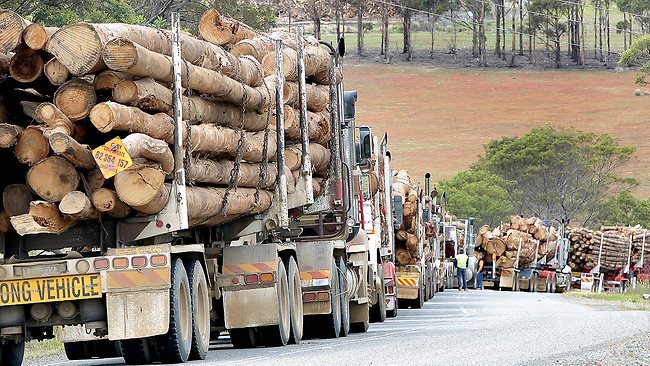About 35,000 years ago the Earth was in the grip of an ice age. Sea level was lower than it is today and Tasmania was joined to mainland Australia. Indigenous Tasmanians were able to cross on foot. However about 12,000 years ago the ice age ended and sea level rose. Tasmania became an island.
The first European to see Tasmania was Abel Tasman who arrived in 1642. Captain Cook reached Tasmania in 1777. Then in 1798 Matthew Flinders became the first person to circumnavigate Tasmania.The first European settlement in Tasmania was on the eastern bank of the River Derwent. (In 1804 the colony was moved to the western bank).

In 1803 there may have been about 8,000 indigenous people in Tasmania. Tasmanian people were hunter-gatherers. They hunted with spears and they also fished. They made simple huts of bark and they covered themselves with fat, ocher and charcoal to keep themselves warm.
Europeans killed many especially during the 'Black War' of the 1820s. Others died of diseases introduced by Europeans. The 'warfare' between Europeans and Indigenous Tasmanians began in 1804 with the 'battle' of Risdon Cove. About 300 indigenous people stumbled onto a European camp while hunting kangaroo and soldiers fired at them. Many more Indigenous Tasmanians were killed in the ensuing years.

The Governor of Tasmania from 1824 to 1837 was George Arthur. In the years 1828 to 1832 he declared martial law hoping to end the warfare between Europeans and indigenous people. In 1830 he ordered all able-bodied white men to form a line across Tasmania and sweep across it forcing all the remaining Indigenous Tasmanians onto the Tasman Peninsula. However this move, known as the Black Line, failed.
Eventually a preacher named George Robinson agreed to try and persuade the remaining indigenous people to go to a reservation on Flinders Island. The surviving people agreed to go there. However they continued to die of disease and in 1847 the few survivors were allowed back onto Tasmania.
Meanwhile the first penal settlement in Tasmania was founded in 1822 and in 1825 Van Diemen's land was recognized as a colony in its own right, separate from the rest of Australia. Then in 1842 Hobart town was made a city. In the 19th century there was a whaling industry in Bass Strait. There were also seal hunters until the 1830s. An important shipbuilding industry also grew up in Hobart in the mid-19th century.
Meanwhile ever more convicts were sent to Tasmania. However transportation to Tasmania ended in 1852. In 1862 Margaret Coghlan was the last woman hanged in Tasmania. Then in 1856 the name of the colony was changed from Van Diemen's Land to Tasmania and by 1861 its population had reached 90,000. Then in the 1870s tin was discovered in Tasmania and in the 1890s copper mining in Tasmania boomed. The population of Tasmania grew rapidly. From only about 4,500 in 1820 it grew to 57,000 in 1861 and 115,000 in 1881. The University of Tasmania was founded in 1890.
In 1862 Margaret Coghlan was the last woman hanged in Tasmania. Then in 1856 the name of the colony was changed from Van Diemen's Land to Tasmania and by 1861 its population had reached 90,000. Then in the 1870s tin was discovered in Tasmania and in the 1890s copper mining in Tasmania boomed. The population of Tasmania grew rapidly. From only about 4,500 in 1820 it grew to 57,000 in 1861 and 115,000 in 1881. The University of Tasmania was founded in 1890.
In 1898 Tasmanians voted in a referendum to join with the rest of Australia. So the Commonwealth of Australia was formed in 1901. However thousands of Tasmanian soldiers died in the First and Second World wars. Tasmania also suffered badly in the depression of the 1930s. Meanwhile Northeast Tasmania suffered severe floods in 1929 and 22 people died. Southern Tasmania suffered bad flooding in 1960.
Yet in the late 20th century tourism boomed in Tasmania. Environmentalism also grew. Meanwhile in 1996
Tammy Van Wisse became the first person to swim across the Bass Straits.
However like the rest of Australia Tasmania suffered in the recession of 1991-92. In 1992 unemployment in Tasmania rose to over 12%. Yet it fell to a low point of 3.7% in 2008. In March 2011 unemployment in Tasmania stood at 5.8%.

Today important industries in Tasmania include processing minerals and tourism. Beef and lamb are also exported from Tasmania. Forestry is also an important industry.
Today Tasmania is a flourishing state of Australia. Today the population of Tasmania is 498,000.












